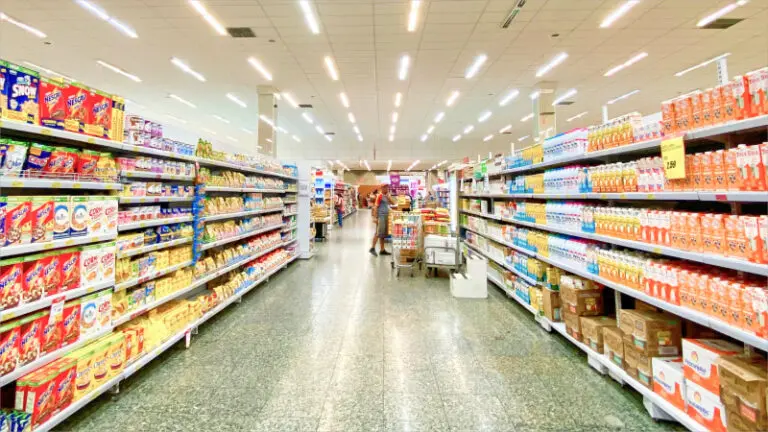
Patel Retail is a diversified player in food related businesses. Its business spans food retail, manufacturing and trading. Over the past two years, it has grown its food retail and manufacturing business while reducing exposure to the trading business.
Its IPO is aimed at strengthening the balance sheet, funding its working capital requirements and providing liquidity to some of its shareholders.
Offer Details of the IPO
Dhanji Raghavji Patel: Up to 7,68,000 equity shares
Bechar Raghavji Patel: Up to 2,34,000 equity shares
Price Band: Rs. 237 to Rs. 255 per Equity Share
Book Running Lead Managers (BRLMs)
Objectives of the IPO
· De-leveraging/Repayment of Debt: Repayment/prepayment of certain borrowings availed by the company: INR 590 million
· Working capital requirements: Funding of working capital requirements of the company: INR1,150 million
Indian Retail Industry Overview
The Indian retail industry is a dynamic and rapidly growing sector that plays a crucial role in the country’s economy. The industry encompasses a wide range of products and services, including food and groceries, apparel, electronics, home furnishings, and more. The end customers of the industry are individuals and households who purchase these products and services for personal consumption. The industry is characterized by a mix of organized and unorganized players, with the organized segment comprising of modern retail formats such as supermarkets, hypermarkets, and e-commerce platforms, while the unorganized segment includes traditional retail formats such as kirana stores and street vendors.
The Indian retail industry can be broadly segmented into several key categories, including:
Food and Grocery Retailing
This segment accounts for the largest share of the retail industry in India, with a market size of over USD 850 billion. The segment includes modern retail formats such as supermarkets and hypermarkets, as well as traditional retail formats such as kirana stores and street vendors. The segment offers a wide range of products, including fresh produce, packaged foods, and beverages.
Apparel and Footwear Retailing
This segment is the second-largest segment in the Indian retail industry, with a market size of over USD 150 billion. The segment includes modern retail formats such as department stores and specialty stores, as well as traditional retail formats such as street vendors and small shops. The segment offers a wide range of products, including clothing, footwear, and accessories.
Electronics Retailing
This segment is a rapidly growing segment in the Indian retail industry, with a market size of over USD 100 billion. The segment includes modern retail formats such as electronics stores and e-commerce platforms, as well as traditional retail formats such as small shops and street vendors. The segment offers a wide range of products, including consumer electronics, home appliances, and IT products.
E-commerce
This segment is a rapidly growing segment in the Indian retail industry, with a market size of over USD 50 billion. The segment includes online retail platforms that offer a wide range of products, including food and groceries, apparel, electronics, and more. The segment is characterized by a high level of competition, with several players competing for market share.
Industry Size and Growth Trends
The Indian retail industry has witnessed significant growth over the past decade, driven by rising consumer demand, urbanization, and increasing penetration of organized retail formats. As of CY 2024, the industry size is valued at USD 1,260 billion, with a projected growth to USD 1,300 billion in CY 2025 and further to USD 2,000 billion by CY 2033, translating into a CAGR of 5.27% between CY 2024-33.
Within the industry, various segments are expected to exhibit distinct growth patterns. The organized retail segment is anticipated to expand at a CAGR of 4.13%, growing from USD 186 billion in CY 2024 to USD 267 billion in CY 2033. The Indian bakery and snacks segment is expected to grow at an 11.01% CAGR, increasing from INR 129.58 billion in CY 2024 to INR 242.56 billion by CY 2030.
Key Drivers of Growth
Several factors are driving growth in the Indian retail industry. These include:
These factors are expected to continue driving growth in the Indian retail industry, making it an attractive investment opportunity for investors.
Company Overview: Patel Retail Limited
Patel Retail Limited was incorporated in 2007 by Dhanji Raghavji Patel, Bechar Raghavji Patel, and Hiren Bechar Patel. The promoters have a long-standing relationship with each other and have been associated with various business ventures in the past.
Patel Retail Limited is a retail and manufacturing company with a focus on food and grocery products. It operates a chain of retail stores, manufactures food products and is engaged in agricultural trading. The company has a strong presence in Maharashtra and Gujarat, with a chain of retail stores and a manufacturing facility at Dudhai, Kutch, Gujarat. The company’s processed foods product portfolio includes a range of spices, pulses, and wheat flour products, as well as mango pulp. The company’s business segments can be broadly classified into:
Retail Segment
Manufacturing Segment
Competitive Landscape
The Indian retailing space is highly competitive, with several organized and unorganized players operating in the market. The major competitors in the retail space include:
Competitive Positioning
Patel Retail’s management believes that its business model is different from its competitors. It has a higher focus on increasing the contribution of its private label goods. Also, the company relies on its strong regional brand and a loyal customer base. Management believes that the company has a strong presence in the markets where it operates, with a loyal customer base. It sees focus on private label goods and competitive pricing as a differentiator. In summary, here are the key differentiators:
Strengths
Diversified Product Portfolio: The company has a diversified product portfolio of retail and manufacturing.
Strong Manufacturing Capabilities: The company has state-of-the-art manufacturing facilities that enable it to produce high-quality products.
Weaknesses
Dependence on Agricultural Industry: The company’s business is heavily dependent on the agricultural industry, which makes it vulnerable to fluctuations in crop yields, prices, and weather conditions.
High Competition in the Market: The company operates in a highly competitive market, which can make it challenging to maintain market share and pricing power.
Limited Geographic Presence: The company’s operations are currently limited to a few regions, which can restrict its growth and expansion opportunities.
Financial Profile:
Lacklustre revenue growth: Patel retail has witnessed a decline in overall revenue over the past two years. The decline has been mostly due to a fall in revenue at its trading business. Revenue from its retail business has increased consistently over the past two years.
The company’s retail revenue growth has been driven by several factors, including:
Strong Profit Growth: Despite the lacklustre revenue, profits have expanded strongly on the back of improving margins. Over the past two years, its EBITDA margins have expanded by 300bps and led to a strong PAT growth. Changing revenue mix is a key reason for its PAT growth.
Peer Comparison – Valuations:
| Company | CMP (INR) | EPS (Diluted in INR) | PE Ratio | RONW (%) |
| Patel Retail Limited | 255 | 10.3 | 24.76 | 19.02% |
| Avenue Supermarts Limited | 4257.8 | 41.5 | 102.33 | 12.64% |
| Vishal Mega Mart Limited | 146.62 | 1.36 | 104.73 | 9.87% |
| Spencers Retail Limited | 57.2 | -27.37 | NA | -37.24% |
| Osia Hyper Retail Limited | 12.75 | 1.46 | 8.73 | 4.97% |
| Aditya Consumer Marketing Limited | 42.71 | -2.62 | NA | -18.51% |
| Sheetal Universal Limited | 126.5 | 8.12 | 15.58 | 21.44% |
| Kovilpatti Lakshmi Roller Flour Mills Limited | 129.05 | 1.27 | 101.61 | 1.72% |
| KN Agri Resources Limited | 251 | 14.76 | 17.01 | 10.50% |
| Madhusudhan Masala Limited | 141.2 | 10.93 | 12.92 | 16.04% |
Source: RHP
Peer Comparison – Financials
| FY 23 | FY 24 | FY 25 | CAGR | ||
| Patel Retail | Revenue from operations | 101,855 | 81,419 | 82,069 | -10.24% |
| EBITDA | 4,324 | 5,584 | 6,243 | 20.16% | |
| EBITDA Margin (%) | 4.25% | 6.86% | 7.61% | ||
| PAT | 1,638 | 2,253 | 2,528 | 24.23% | |
| PAT Margin (%) | 1.61% | 2.77% | 3.08% | ||
| RoE (%) | 23.66% | 24.24% | 19.02% | ||
| RoCE (%) | 12.66% | 15.10% | 14.43% | ||
| Avenue Supermarts | Revenue from operations | 4,283,956 | 5,078,883 | 5,935,805 | 17.71% |
| EBITDA | 363,703 | 410,377 | 448,733 | 11.08% | |
| EBITDA Margin (%) | 8.49% | 8.08% | 7.56% | ||
| PAT | 237,834 | 253,561 | 270,745 | 6.69% | |
| PAT Margin (%) | 5.55% | 4.99% | 4.56% | ||
| RoE (%) | 14.79% | 13.56% | 12.64% | ||
| RoCE (%) | 19.48% | 18.84% | 17.47% | ||
| Vishal Mega Mart | Revenue from operations | 758,604 | 891,195 | 1,071,635 | 18.85% |
| EBITDA | 102,052 | 124,860 | 153,018 | 22.45% | |
| EBITDA Margin (%) | 13.00% | 14.00% | 14.00% | ||
| PAT | 32,127 | 46,194 | 63,197 | 40.25% | |
| PAT Margin (%) | 4.24% | 5.18% | 5.90% | ||
| RoE (%) | 6.23% | 8.22% | 9.87% | ||
| RoCE (%) | 75.80% | 68.76% | 53.23% | ||
| Spencers Retail | Revenue from operations | 245,258 | 234,503 | 199,520 | -9.81% |
| EBITDA | 358 | -1,165 | -4,326 | ||
| EBITDA Margin (%) | 0.15% | -0.50% | -2.17% | ||
| PAT | -21,040 | -26,615 | -24,636 | 8.21% | |
| PAT Margin (%) | -8.58% | -11.35% | -12.35% | ||
| RoE (%) | 139.83% | 64.00% | 37.24% | ||
| RoCE (%) | 156.24% |
Source: RHP
Related Tags

![]() IIFL Customer Care Number
IIFL Customer Care Number
(Gold/NCD/NBFC/Insurance/NPS)
1860-267-3000 / 7039-050-000
![]() IIFL Capital Services Support WhatsApp Number
IIFL Capital Services Support WhatsApp Number
+91 9892691696
IIFL Capital Services Limited - Stock Broker SEBI Regn. No: INZ000164132, PMS SEBI Regn. No: INP000002213,IA SEBI Regn. No: INA000000623, SEBI RA Regn. No: INH000000248, DP SEBI Reg. No. IN-DP-185-2016, BSE Enlistment Number (RA): 5016
ARN NO : 47791 (AMFI Registered Mutual Fund Distributor), PFRDA Reg. No. PoP 20092018

This Certificate Demonstrates That IIFL As An Organization Has Defined And Put In Place Best-Practice Information Security Processes.